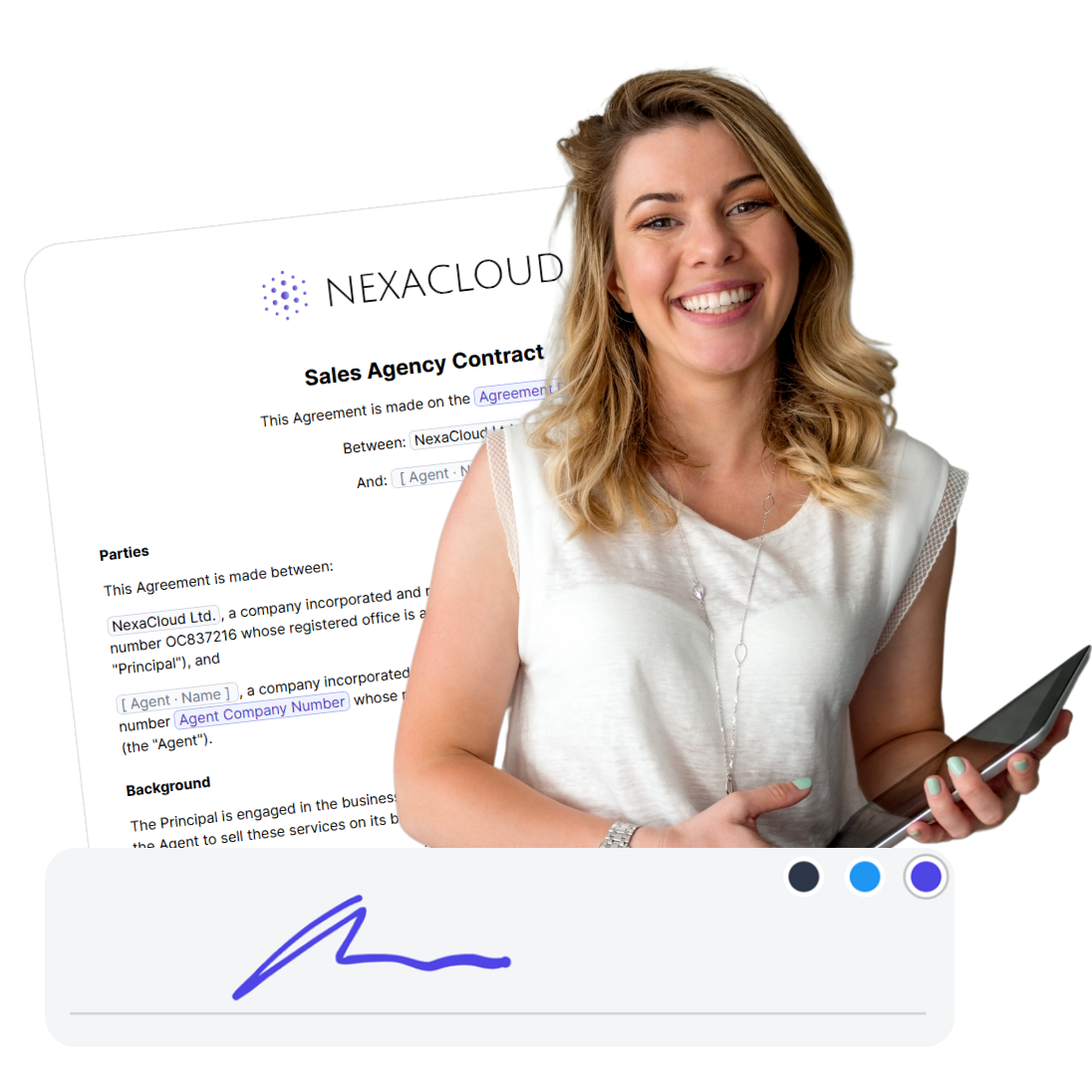Invoice
From:
NexaCloud Ltd.
13 Mellisa Spurs
East Sean
KT6 5DX
Bill To:
Client
Description | Quantity | Unit Price | Total |
|---|---|---|---|
… | … | … | … |
Subtotal | |||
Tax rate (%) | |||
Grand total | |||
Payment Terms:
Due Date:
Thank you for your business.
An expense report is a form that employees use to list their business expenses and request reimbursement. It helps companies keep track of spending on things like travel, meals, and office supplies. With a clear expense report process, budgets are easier to manage and claims are processed faster.
Our free expense report template is simple to use and can be filled out digitally or on paper. It’s perfect for any business that wants to organize expense claims and speed up approvals without extra hassle.
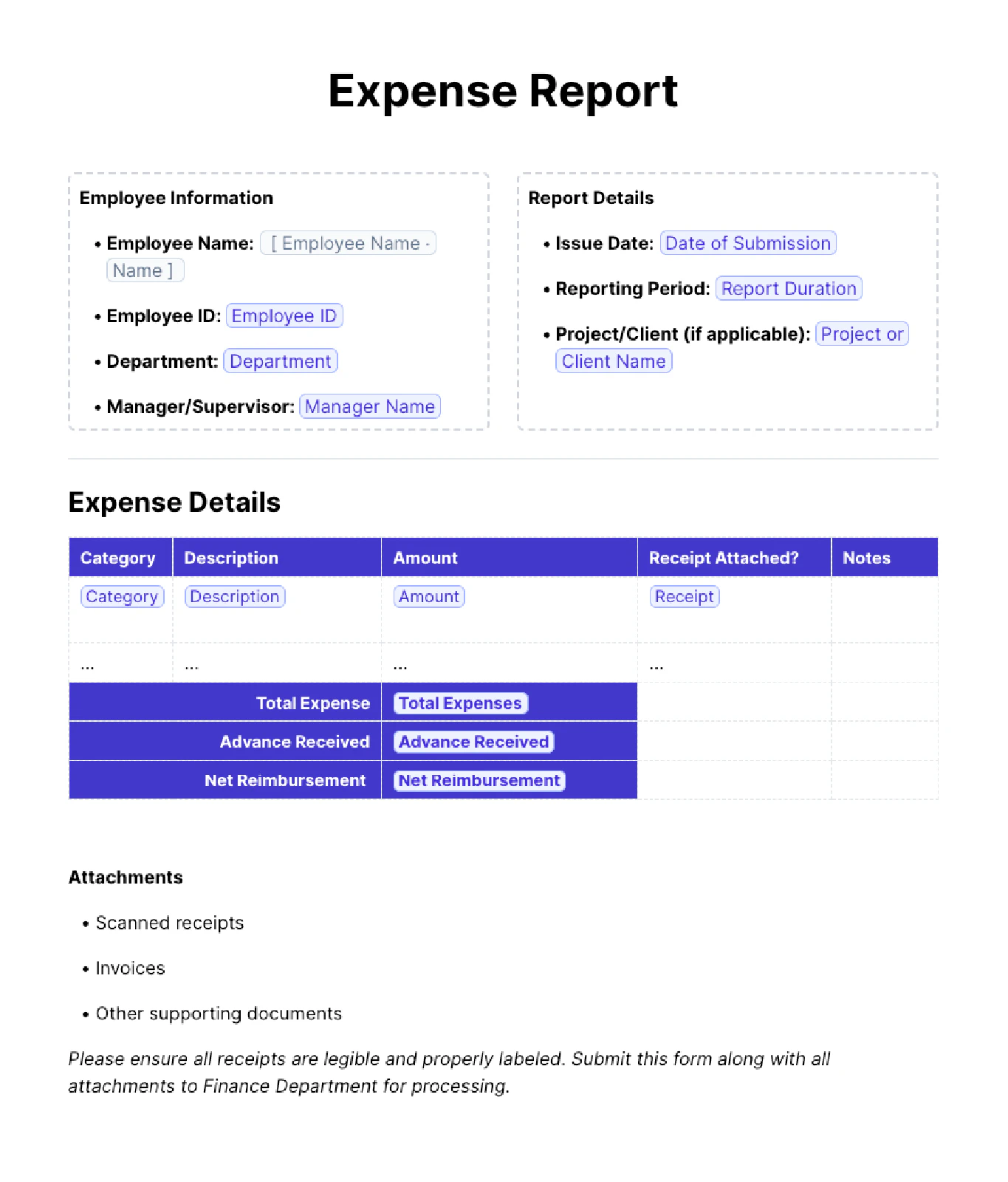
The full content of the template is available, when you want to edit the text and enter your details make sure to click on the button to use the template.
From:
NexaCloud Ltd.
13 Mellisa Spurs
East Sean
KT6 5DX
Bill To:
Client
Description | Quantity | Unit Price | Total |
|---|---|---|---|
… | … | … | … |
Subtotal | |||
Tax rate (%) | |||
Grand total | |||
Payment Terms:
Due Date:
Thank you for your business.
Disclaimer: The original creator, the author of this template, and fynk GmbH are not responsible for any damages or liabilities that may result from using this template. This template should not be considered a substitute for legal advice, and consulting with a legal professional is recommended before use. fynk GmbH, the original creator, and the author do not provide legal advice and will not be held accountable for any legal consequences arising from its use.
Background Information
Find out what an expense report is, when to use it, what it should include, and how to fill one out easily.
An expense report is a structured record employees submit to claim reimbursement for business-related costs like travel, meals, client entertainment, mileage, software subscriptions, even small office supplies. It’s a he bridge between an employee’s wallet and your general ledger. Once submitted, it triggers accounting checks and reimbursement.
You can manage expenses and generate expense report using several methods, each with its own strengths and drawbacks. The most basic approach is manual tracking with spreadsheets like Excel (you can download a sample in this page), which allows for full control but requires careful data entry, regular checks for errors, and diligent record-keeping.
More advanced way is to adopt dedicated expense management software or document management softwares such as fynk, Lexware, or Emburse, which automate data capture, enforce policy rules, streamline approvals, and integrate directly with accounting systems.
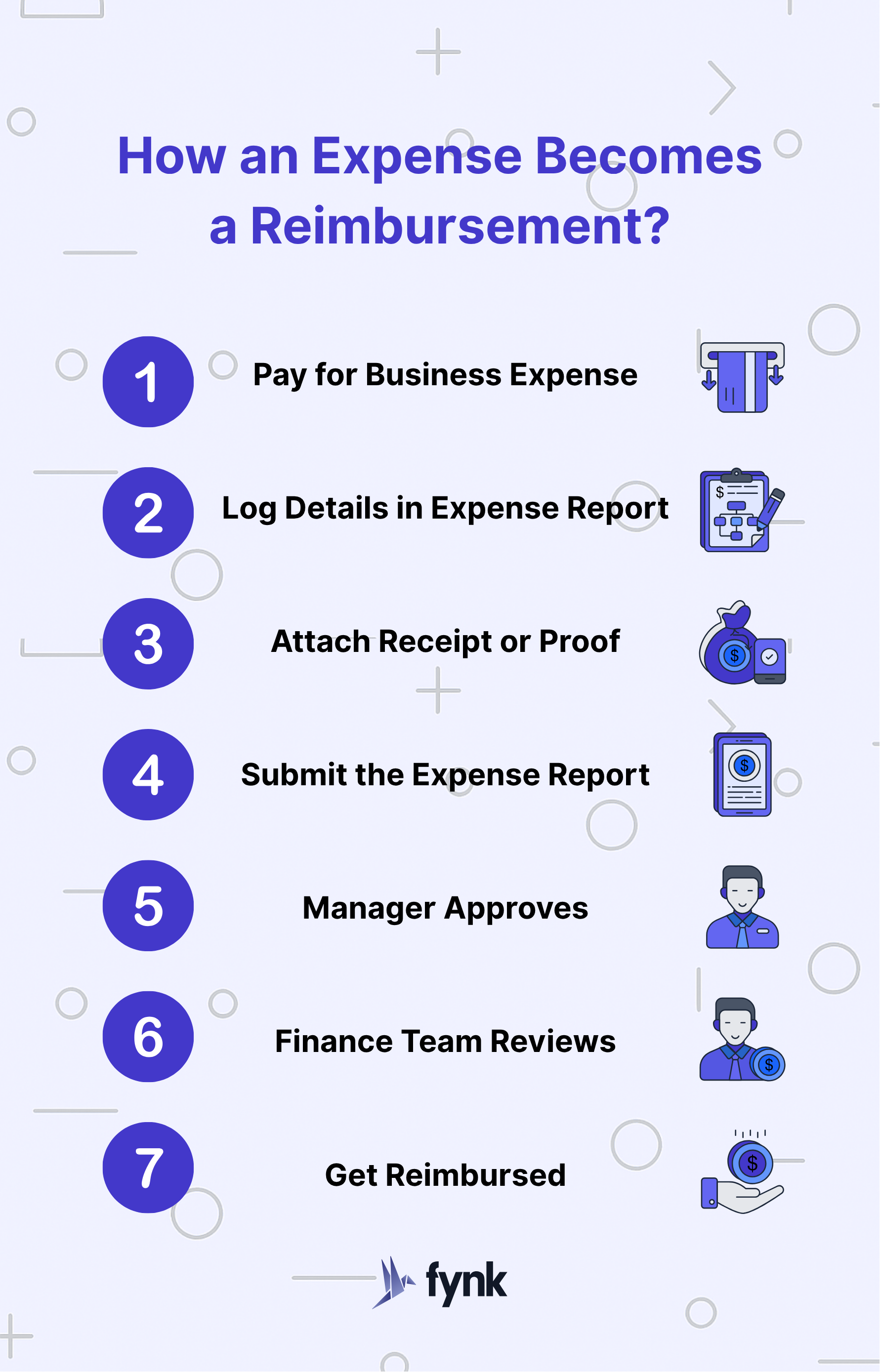


When you usually need a expense report?
| Critical Field | Why It Matters | Pro Tip |
|---|---|---|
| Employee & Department | Routes costs to cost centre | Pre-fill from your HR software to cut errors |
| Reporting Period & Client | Aligns with project billing cycles | Lock period once submitted |
| Expense Breakdown Table | Core of the report | Use data validation lists for categories |
Attach clear, legible copies for every line item. Modern apps allow instant uploads from your phone, making lost receipts a thing of the past.
For larger or recurring costs such as SaaS or training fees, invoices provide the detail and audit trail regulators expect.
Supplementary evidence, like boarding passes for mileage claims or agendas for client meals, demonstrates compliance and makes reviews simple.
Encouraging staff to always attach proof not only speeds up reimbursement, but builds a record that stands up to audits for years.
Ready-to-use templates save admin time and ensure consistency across your organization. Here are two valuable options for any workflow:
Built directly into the fynk platform, this dynamic template guides employees step by step. It pre-fills employee data when synced with your system, enforces required fields, and prompts for receipts using form-like fields. Approvals happen in just a couple of clicks, so reimbursement can be as fast as your policy allows.
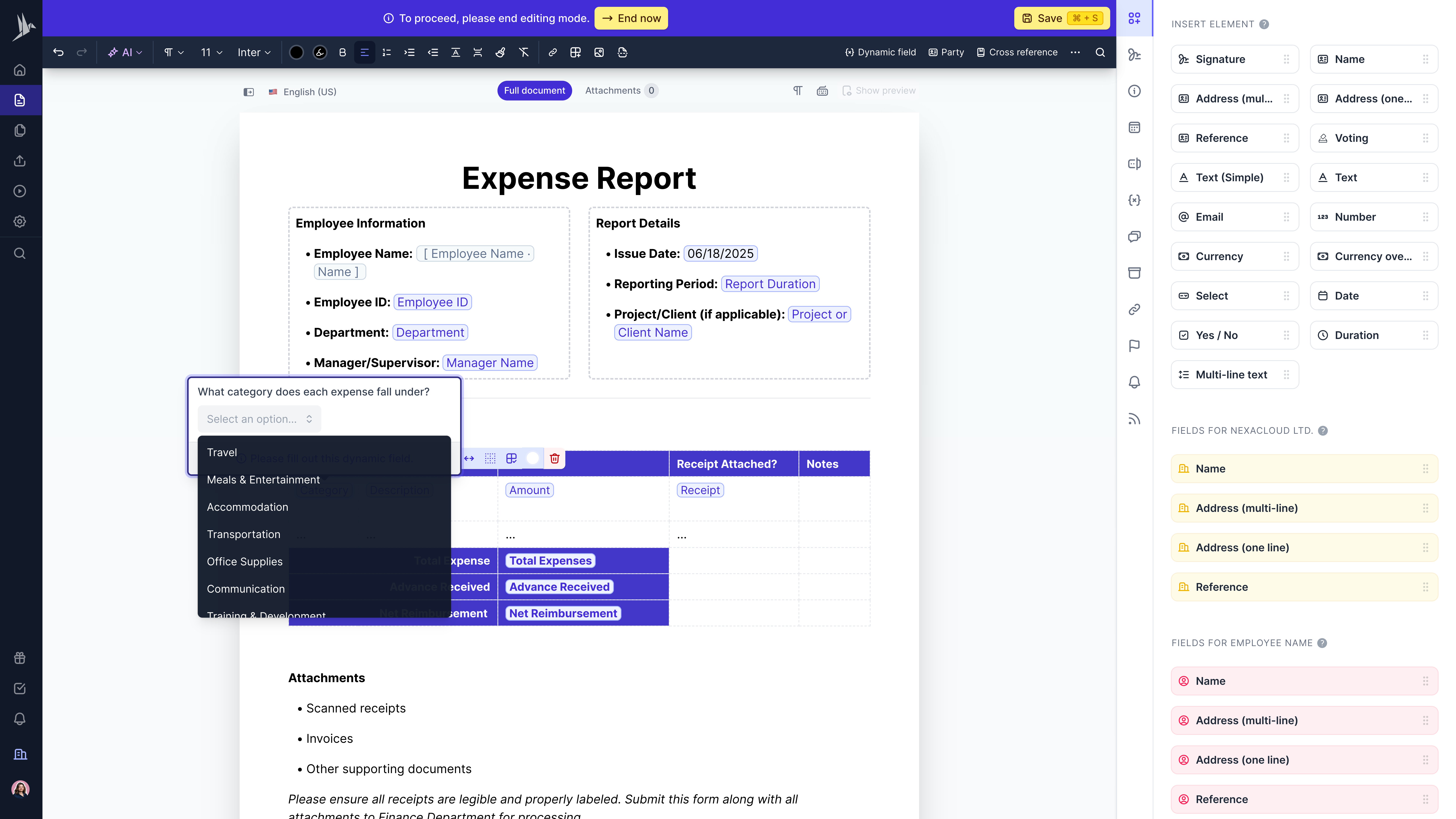


With fynk, your workflow improves instantly:
Find out how fynk can help you close deals faster and simplify your eSigning process – request a demo to see it in action.
Prefer working in Excel? Download a clean, structured template here. This sheet features dropdown categories, VAT fields, and a graph of your expenses, making it simple for anyone to use and easy for finance to review.
Easily track and manage your business expenses with this customizable Excel spreadsheet!
We will collect, use and protect your data in accordance with our privacy policy.

| Date | Employee Name | Department | Expense Category | Description | Project/Client | Payment Method | Currency | Net Amount | Tax Amount | Gross Amount | Receipt Attached | Reimbursable |
|---|---|---|---|---|---|---|---|---|---|---|---|---|
| 2025-06-05 | Anna Berger | Sales 💼 | Travel 🚄 | Train to Munich | ACME GmbH | Personal Card 💳 | EUR | 89.00 | 16.91 | 105.91 | ✅ | ✅ |
| 2025-06-06 | Anna Berger | Sales 💼 | Meals 🍽️ | Client Lunch | ACME GmbH | Personal Card 💳 | EUR | 52.00 | 9.88 | 61.88 | ✅ | ✅ |
| 2025-06-07 | Anna Berger | Sales 💼 | Accommodation 🏨 | Hotel (2 nights) | ACME GmbH | Personal Card 💳 | EUR | 220.00 | 41.80 | 261.80 | ✅ | ✅ |
| 2025-06-08 | Anna Berger | Sales 💼 | Taxi 🚕 | Taxi to airport | ACME GmbH | Cash 💶 | EUR | 37.00 | 7.03 | 44.03 | ✅ | ✅ |
| 2025-06-09 | Anna Berger | Sales 💼 | Office Supplies 🗂️ | Presentation Folders | ACME GmbH | Personal Card 💳 | EUR | 18.00 | 3.42 | 21.42 | ✅ | ✅ |
An expense report policy tells employees which expenses are reimbursable, how to submit claims, and what documentation is needed. A great policy provides fairness, transparency, and efficiency for your business. When written well, it removes uncertainty for employees and protects your company from fraud, tax penalties, and budget overruns.
A great policy is specific, accessible, and practical. Here’s what your policy should always include:
Define exactly what can be claimed, including travel, meals, office supplies, client gifts, software subscriptions, mileage, and so on. Set clear limits for each category and give examples where confusion might occur. For instance, meals are reimbursable when traveling for work or meeting with clients, not during daily commutes or personal errands.
Deadlines keep your books clean and help employees get paid quickly. State when claims must be submitted, such as within 10 days after the expense occurs or at the end of each month. Make it a two-way promise: employees submit on time, and finance commits to processing reimbursements within a set period, for example, five business days.
Lay out each step from submission to reimbursement. Who approves expenses, line managers, project leads, or finance? What happens if someone is on leave? Good policies include backup approvers so payments never get stuck. Use clear steps so everyone understands the process.
Did you know you can set customizable approval workflows in fynk, so that the right person gets an automated notification and reminders for their review?
This policy sets out how employees can claim and be reimbursed for legitimate business expenses, ensuring company resources are used responsibly and that reimbursement is fast and fair.
Employees may claim costs that are directly related to their work, such as travel (including flights, trains, taxis, and accommodation), meals or hospitality with clients, business-related office supplies, work-from-home equipment with prior approval, software or subscriptions required for work, and fees for training or professional development. Every expense claim must be supported by a receipt, invoice, or other valid proof of payment.
Personal purchases, entertainment for personal use, fines or penalties, late fees, and any expenses lacking proper documentation are not eligible for reimbursement. Alcohol may only be reimbursed when it is part of pre-approved client hospitality.
Employees are required to submit expense reports within 10 days of the transaction or their return from business travel. Each claim should be itemized, categorized correctly, and must include a brief business purpose for each expense. Digital copies of receipts or supporting documents must be attached. The company’s approved template, either in the fynk app or the official Excel sheet, should be used for every submission.
All expense reports must be submitted via the company’s official process. The employee’s direct manager will review each report and either approve or reject claims based on this policy. Once approved, the finance department will process reimbursement within five business days. If there are any questions or disputes about a claim, finance will review the situation and make a final decision.
Claims that do not follow this policy may be declined. Employees who repeatedly submit non-compliant reports may lose the ability to claim expenses.
If you have questions about whether an expense is eligible or need help with the reporting process, please contact the Finance team or visit the expense section of the company portal for more guidance.
Are you looking for more templates? fynk has them all!
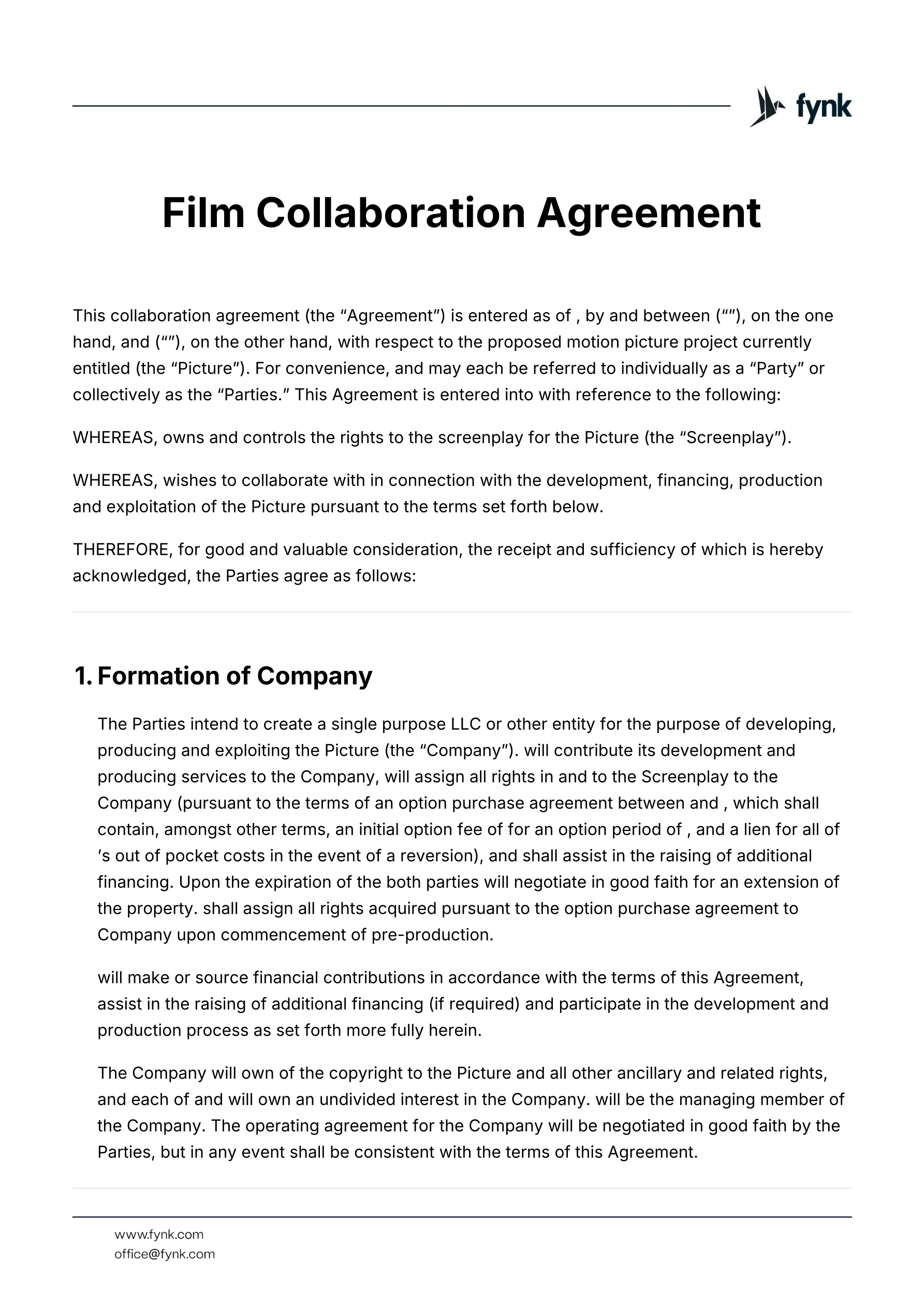
Define roles, ownership, and profit-sharing for film partners with a clear collaboration agreement.

Define rights, payments, and obligations between producers and distributors for film releases.

Secure film funding and clarify repayment, profit-sharing, and investor rights with a clear financing agreement.
Fill out the form and we will get in touch with you to give you a personal, customized demo of fynk.
Greetings!
I'm Markus, co-founder of fynk. After you've submitted the form, I'll swiftly get in touch with you.
Also, right after you submit your details, you can pick a time that works best for you for our meeting.

